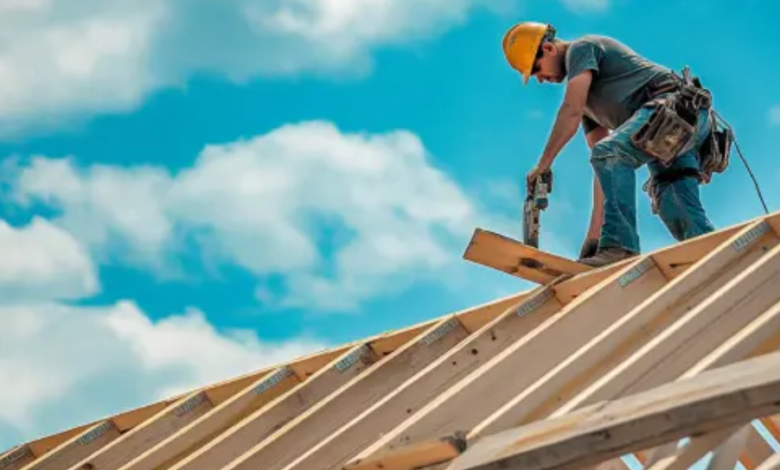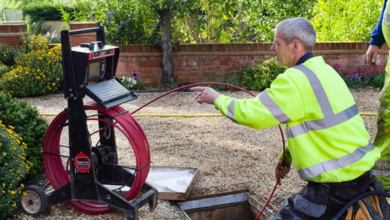The Impact of Weather on Your Roof

Your roof serves as the first line of defense against the elements in Redmond, WA, protecting your home from various weather conditions throughout the year. However, the same weather your roof shields you from can cause significant wear and tear over time. Understanding the impact of different weather conditions on your roof is crucial for maintaining its longevity and ensuring it provides reliable protection. We will explore how various weather elements, such as sun, rain, wind, and snow, can affect your roof and what steps you can take to mitigate these effects.
Various weather elements and their effect on the roof
Sun and Heat: The Silent Degraders
Prolonged exposure to the sun’s ultraviolet (UV) rays is one of the most common causes of roof degradation. Over time, the intense heat and UV radiation can cause roofing materials to deteriorate, leading to issues such as cracking, warping, and fading. Asphalt shingles, for example, can lose their protective granules under prolonged sun exposure, making them less effective at shielding your home from the elements. Additionally, the constant expansion and contraction of materials due to temperature fluctuations can weaken the roof’s structural integrity. To mitigate the effects of sun and heat, choosing roofing materials designed to withstand high temperatures and UV radiation is essential. Regular inspections and maintenance can also help identify and address sun-related damage before it becomes a significant issue.
Rain and Moisture: The Persistent Threat
Rain is another weather element that can significantly impact your roof. While roofs are designed to repel water, prolonged exposure to moisture can lead to various problems, especially if the roof is damaged or poorly maintained. Water can seep into small cracks or gaps in the roofing material, leading to leaks, rot, and mold growth. Over time, this moisture can compromise the roof’s structural integrity, causing more extensive damage that may require costly repairs. Proper roof maintenance, including regular inspections and timely repairs, prevents water-related issues. Additionally, ensuring that gutters and downspouts are clear and functioning correctly can help direct water away from the roof and prevent pooling, which can lead to leaks.
Read also:/ Online Divorce: Is It Right for You? Expert Advice Explained
Wind: The Force That Tests Your Roof’s Resilience
Wind is a powerful force that can cause significant damage to roofs, particularly during storms or high-wind events. Strong winds can lift shingles, tiles, or other roofing materials, exposing the underlying layers to the elements. This can lead to water infiltration, further exacerbating the damage. In severe cases, wind can even cause complete roof sections to detach, leaving your home vulnerable to additional weather-related damage. To protect your roof from wind damage, it’s essential to ensure that all roofing materials are securely fastened and in good condition. Regular inspections after storms or high-wind events can help identify any damage that needs to be addressed promptly to prevent further issues.
Snow and Ice: The Winter Challenge
Winter weather poses unique challenges for roofs, particularly in regions that experience heavy snowfall and freezing temperatures. Snow accumulation on the roof can add significant weight, which can strain the roof’s structure and potentially lead to sagging or collapse if the roof is not designed to handle the load. The freeze-thaw cycle can also cause ice dams to form along the roof’s edges, preventing melting snow from draining properly. This trapped water can seep under shingles or other roofing materials, leading to leaks and water damage inside your home. To mitigate the impact of snow and ice, it’s important to ensure that your roof is adequately insulated and ventilated, which can help prevent ice dams from forming. Regularly removing snow from the roof can also reduce the risk of excessive weight causing damage.
Hail: The Sudden, Destructive Force
Hailstorms are another weather event that can cause significant damage to roofs. Hailstones can range in size from small pellets to large, golf ball-sized chunks of ice, and the impact of these stones can dent, crack, or puncture roofing materials. Even smaller hailstones can cause cumulative damage over time, especially if other weather-related factors already compromise the roof. After a hailstorm, inspecting your roof for signs of damage, such as dents in metal roofs or cracks in shingles, is important. Prompt repairs can prevent hail damage from leading to more serious issues, such as leaks or structural problems. In areas prone to hail, consider installing impact-resistant roofing materials designed to withstand the force of hailstones.
Temperature Fluctuations: The Hidden Stressor
Temperature fluctuations, especially those that occur seasonally or within a single day, can significantly stress your roof. As temperatures rise and fall, roofing materials expand and contract, leading to cracking, splitting, or warping over time. This constant movement can also weaken the bonds between roofing components, increasing the risk of leaks or other damage. To minimize the impact of temperature fluctuations, choosing roofing materials that are flexible and can withstand the stress of expansion and contraction is important. Additionally, regular maintenance and inspections can help identify early signs of damage caused by temperature changes, allowing for timely repairs that prevent more serious issues from developing.
Weather conditions play a significant role in the wear and tear of your roof, affecting its durability and effectiveness over time. From the relentless sun and heat to the challenges posed by rain, wind, snow, and hail, your roof is constantly exposed to elements that can cause damage. We will explore how understanding the impact of these weather conditions and taking proactive steps, such as regular maintenance and choosing the right materials, can help you protect your roof and extend its lifespan. By staying vigilant and addressing weather-related issues promptly, you can ensure that your roof continues to provide reliable protection for your home, no matter the weather.





